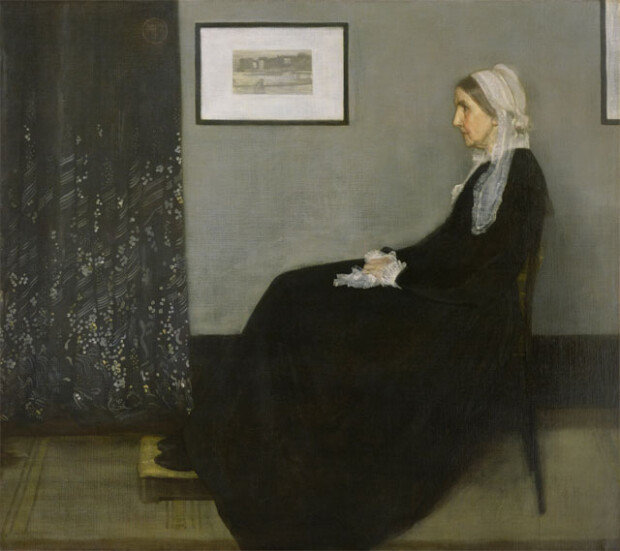The Mona Lisa of the Victorian Era
The Mona Lisa of the Victorian Era
Posted May. 09, 2019 07:49,
Updated May. 09, 2019 07:49

Known as “Icon of Mother’s love” or “Mona Lisa of the Victorian Era,” this painting is probably the most famous and adored painting of a mother. This is the leading piece by American artist James Abbott McNeill Whistler, who befriended the Impressionists. He went to Paris in 1955 to study art and settled in London four years later. This painting helped Whistler gain fame as a painter.
The model shown in the painting is the painter’s mother, who became a widow at a young age and looked after her children in difficult times. An old lady wearing a black dress is sitting on a chair with her hands folded together, facing the front. The achromatic colored curtains and gray walls with a painting suggest that her life has been modest but dignified. It is an ideal image of a mother who is calm, puritan, benevolent but strong. However, the painter focused on the format of the painting, the arrangement and composition of lines and colors, rather than the description of the model. Hence the title “Arrangement in Gray and Black number 1.” The subtitle was added later during the exhibition.
The painting was not originally planned by the artist. One day in 1871, the model for his painting did not show up, and his mother, who was living with him, offered to pose for him. Originally, he had wanted to have his mother standing, but because it was too difficult for his mother, who was 67 years old at that time, he settled to paint her profile in a chair. The painting was finished after a great deal of work for the model, who had to change her position about 10 times. It was exhibited at the Royal Academy of Art the following year. How was it received?
Unlike nowadays, it faced sharp criticism and ridicule. At that time, sentimentality and the colorful style of The Pre-Raphaelite Brotherhood (an artist group founded in 1848 in the U.K.) had been mainstream, so Whistler’s simple and puritan style painting was not popular. The painting gained fame as the “Icon of Motherhood” in the United States in the 1930s. When the painting entered the Chicago World Exhibition in 1933, the public loved the painting, hailing it as the symbol for motherly love, regardless of his intentions. The portrait of his mother helped him become one of the most popular artists in the U.S.







